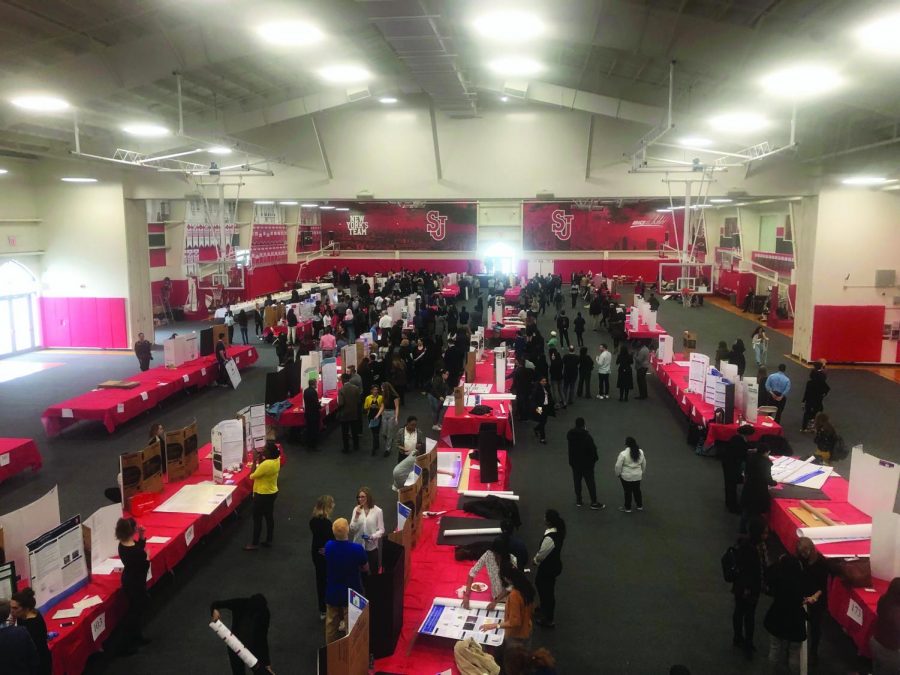Hundreds of students from various undergraduate and graduate programs, as well as several faculty members, congregated in Taffner Field House on Thursday, April 11 to share the many great things they have learned.
On this day, Taffner Field House on the St. John’s University Queens Campus is reconstructed. The divider that splits the Field House in two is removed, the polished vinyl flooring is rolled over with carpet and hundreds of stations are prepared for presentation. The appropriate attire changes from a t-shirt and basketball shorts to a business casual outfit, and the air is filled with exhilaration from students conversing, sharing and learning.
This is Research Month at St. John’s University, where students and faculty are given the opportunity to showcase their research to the University community.
It takes much time and effort to get to this point. Research requires a lot of energy and only when it is finished can the students begin to perfect their presentation of their findings.
Such has been the experience of senior Ariana Popoviciu, who worked under Professor Elizabeth Brondolo, supervisor of The St. John’s Collaborative Health Integration Research Program (CHIRP).
“Under the supervision of Dr. Elizabeth Brondolo, both graduate and undergraduate students work to test the effects of discrimination on health outcomes. This research has been an ongoing project that brings in new fellows each semester,” Popoviciu said.
“Essentially, we have been preparing for the poster session since the study itself began. CHIRP members collectively write grants and papers, collect data, run analyses, submit abstracts and present at conferences whenever possible,” she continued.
It is a great opportunity to showcase the research students have done and a chance to practice for other conferences. Naturally, the students presenting are driven to great lengths by both themselves and their mentors to properly prepare.
“Dr. Brondolo is very adamant about making sure all of her students are able to present their data in a clear and succinct manner. Up until the week before poster sessions, she checks in weekly on all the projects. When the date gets closer, all students take turns giving elevator pitches on their work, which she pulls apart and tweaks,” Popoviciu continued.
“The process is intensive,” Professor Brondolo said. As the supervisor of CHIRP, she emphasizes the importance of having her students help each other. Brondolo continued, “We practice making presentations in front of each other and provide criticism. We need to make sure the arguments follow.”
These sentiments of hard work are echoed by sophomore Anne Marie Romain.
“Personally, I have been working on this poster for the last two months. I have been preparing the research even earlier as I had to narrow down on what topic I wanted to do,” she said. “My supervisor, Dr. Chaplin, really helped me pick the topic and prepare the data for the study.”
For some students, Research Month also has the added benefit of preparing them for their post-undergraduate future. Senior Paul Espiritu believes it is personally helpful for him, as a prospective graduate student.
“As a pre-health student this opportunity allows me to demonstrate to graduate faculty and admissions that I have learned a different facet of a science discipline. This event serves as the stepping stone for advanced research,” Espiritu said. “The congregation of the diverse fields of science and networking makes this a staple in the STEM community at St. John’s.”
The hard work and preparation that culminates in Research Month proves to be well worth the effort for the students and faculty involved.
“I really enjoyed participating and I am so grateful that St. John’s has this event,” Romain said. “I believe events like these encourage students to cultivate and present research that they are personally invested in.”








